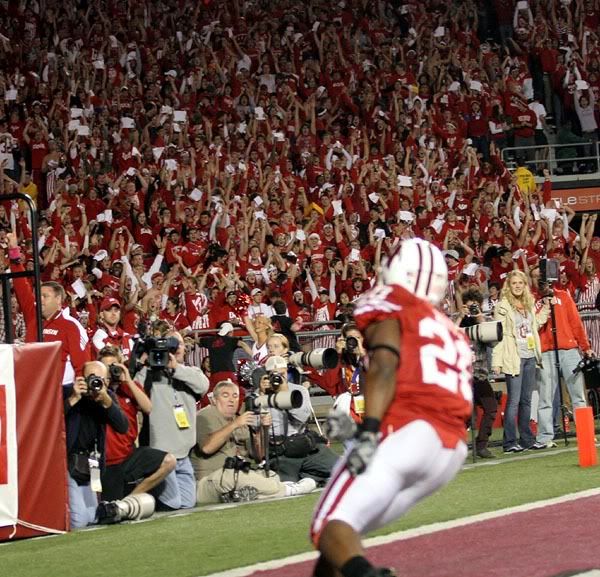Note: This is the fourth in a series of posts about my experiences at the 2010 FIFA World Cup in South Africa. You can read the first post, Twenty Days in South Africa for the World Cup, to get an overview of what we did while we were there and the second post is about the soccer and the third post about is five days in Durban, the fourth post is about my safari in Madikwe Nature Reserve. This post is about five days in Cape Town. I realized that I had written a post about my trip to Cape Town, but somehow didn’t put it live until now. Oops.
We flew into Cape Town the day after the US beat Algeria on a last second goal in Pretoria and on a huge high. The flight into the Cape Town airport is beautiful. It was a clear day and we were able to see Table Mountain with Cape Town spilling downhill toward the clear blue ocean. We got our bags and drove toward the city. In Pretoria, the woman who owned the bed and breakfast referred us to her friend who runs a guest house in Cape Town. As we got closer, we realized that we were staying at the foot of Table Mountain, with amazing views of the city.

The first night, we drove down to the harbor and took in the scene. The Netherlands were playing Cameroon and the entire harbor was orange. Many white South Africans have Dutch ancestry and were supporting the Oranje, so it was a really fun scene. We watched Italy lose to Slovakia in a packed restaurant with amazing harbor/table mountain views and then I walked over toward the stadium to buy a ticket. I ended up getting a ticket right on the midfield stripe for face value. Green Point stadium was beautiful and the game, although meaningless, was really fun.
The next day, I went to an Internet cafe and tried to find out how much it would cost me to fly to Rustenburg to see the USA vs. Ghana round of 16 match and found a cheap flight/car rental. It was too good to pass up, so I made plans to leave Andy and Katie later that night and flew to Joburg with my sleeping bag, USA gear and enough money to buy a ticket at one of the bars.
Before I left, we climbed Cape Town’s iconic Table Mountain. It was a tougher hike than I thought it would be, but completely worth it. Although it was a little cloudy when we got to the top, you could see Cape Town on one side and the Cape of Good Hope on the other. We could see the huge waves crashing into the Cape from both sides of the Atlantic and Indian oceans even though we were miles away and a few thousand feet up.

In the airport, I met two other Americans who had the same plan. We ended up hanging out the entire time and it was a great time and completely worth it, even though the US lost in extra time. I flew back to Cape Town the next day and Andy and Katie were waiting for me with a picnic they had prepared from a local farmers market. We decided to drive around the Cape, while taking a break for lunch to watch the Germany/England match.
We drove to Camps Bay, Hout Bay, Simon Town, Kalk Bay and all of the little towns along the coast. Each had a different feel and different geography. It was a beautiful drive, highlighted by penguins and an amazing sunset over Hout Bay. We went back to our apartment and walked down to a neighborhood bar to watch the night game, ending an awesome day.
The next day, we went out to wine country. Cape Town and the surrounding areas, including Stellenbosch, produce some of the best wines in the world and we spent the day going from winery to winery sampling the best. Cape Town’s wine country is beautiful and very close together. We went to 5-6 wineries and then ended the night in Stellenbosch, which seemed like it was South Africa’s version of Madison.
Our last day in Cape Town, it pored. We went to Bo-Kaap, which is a high area overlooking the city. It is hope to mostly Cape Malays, which are the descendants of Dutch imported Indonesian slaves in from the 1600-1800s. We had a great meal overlooking the city and then explored a spice shop where we bought some awesome curry spices to bring back to the US. My favorite was “mother in law curry” which was their hottest. I’ve cooked with it a bunch of times since I’ve been back and it’s one of the better curry blends I’ve tasted. Bo-Kaap is also home to the iconic multicolored houses that Cape Town is famous for. After our trip to the Bo-Kaap, we drove to the airport to start our 34 our journey home via Dubai and New York. Cape Town was one of the highlights of our trip and I’d love to come back some day.






